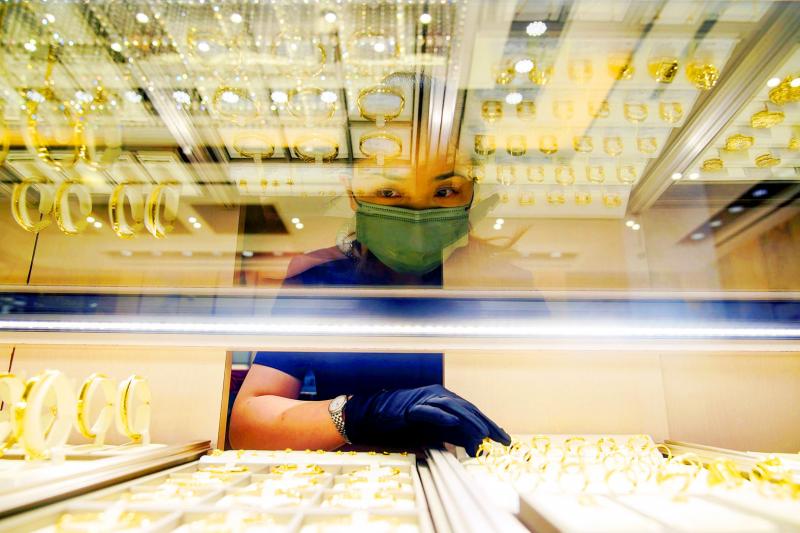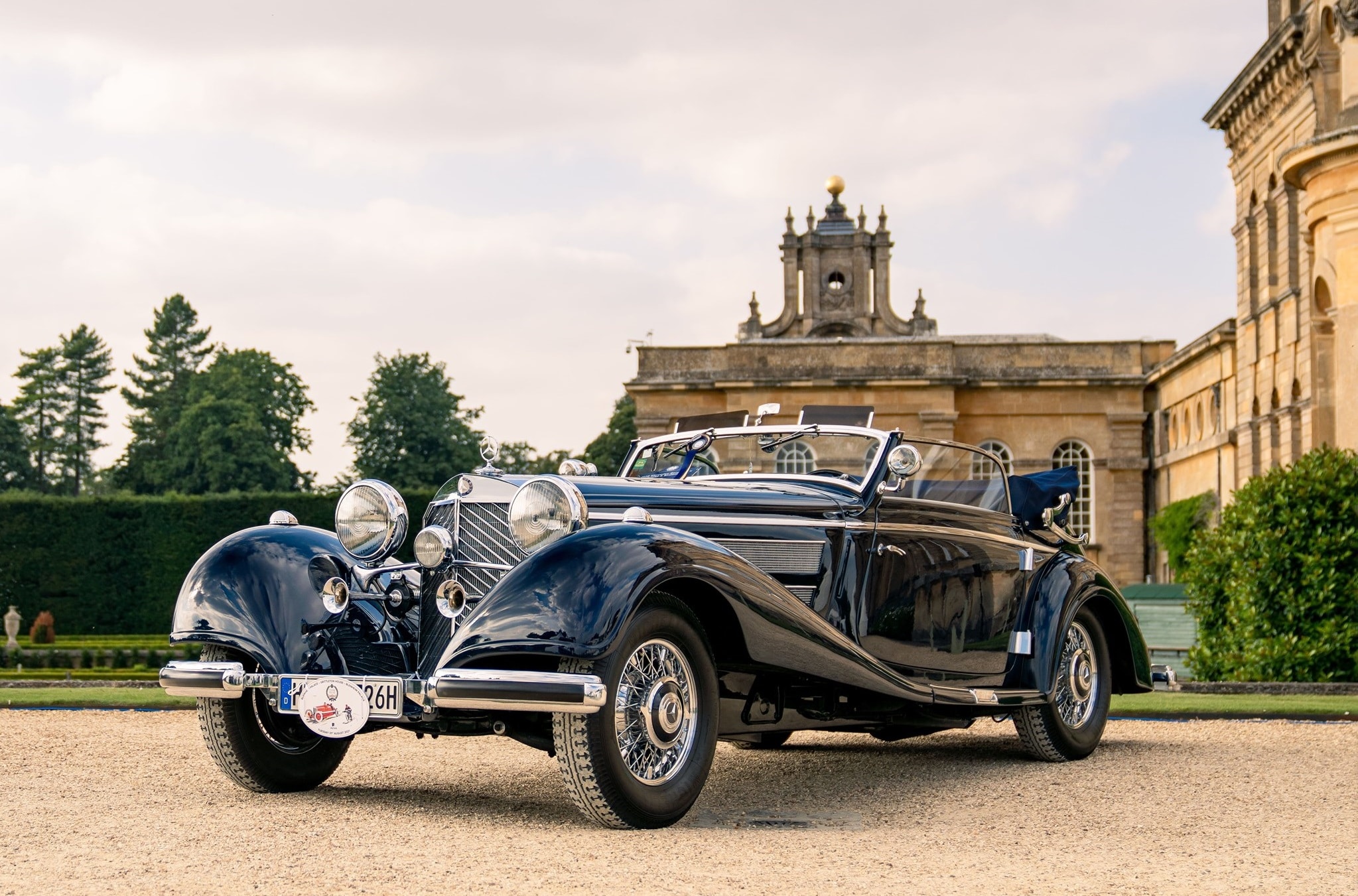[vc_row njt-role=”people-in-the-roles” njt-role-user-roles=”administrator,editor,author,armember”][vc_column][vc_column_text]
Chinese millennials confirm a renewed interest in gold and in particular traditional Chinese symbols jewelry.
For many young affluent Chinese consumers, tradition is back in jewelry.
Sales of gold bracelets, pendants, earrings and necklaces that draw inspiration from dragons, phoenixes, peonies and other traditional Chinese motifs and symbols are soaring among consumers, especially those in their 20s and 30s, helping to fuel the country’s post-gold pandemic recovery.
The rise of e-commerce and national pride are fueling the increase in demand for what is known as heritage gold jewelry. These require intricate craftsmanship.
The popularity of these new pieces began to take off in mid-2020 and has helped demand for gold jewelry in China – the world’s largest consumer – more than double in the first half of 2021 from a year earlier, reaching pre-pandemic levels, according to the World Gold Council (WGC).
It also gives gold a boost at a time when demand from India, the world’s second-largest consumer, has taken a hit. With the pandemic preventing gatherings and consequently delaying weddings, gold, traditionally included in the dowry, has not been in demand.
A patriotic generation
Leading Chinese jewelry retailers, such as Hong Kong-listed Chow Tai Fook Jewellery Group Ltd and Luk Fook Holdings International Ltd, said their heritage gold collections are doing well, especially among younger consumers.
Part of the appeal of heritage gold jewelry, especially among younger consumers, reflects a desire to be patriotic.
“The younger generation grew up when China’s economy was stronger, they have more confidence in China’s development and may have less admiration for Western culture,” said Roland Wang, general manager of WGC China. “They want to have a more traditional Chinese culture in their daily lives, which can be represented by what they wear or how they decorate their homes…. Heritage gold can provide that for them.”
Jewelers say these products are becoming increasingly popular with millennials in Beijing, Shanghai and other major cities as well. The rise of e-commerce, giving consumers access to a much wider selection of jewelry products, is reinforcing this trend.
A growing trend
In anticipation of long-term demand, gold jewelry manufacturers are stepping up their investment in heirloom gold.
“Sales of heritage gold were amazing during the Lunar New Year vacation, surpassing those of conventional gold jewelry,” says a Shenzhen-based manufacturer.
According to the China Gold Association, heritage gold jewelry has become the main driver of the industry’s recovery from the impact of the pandemic. And that rapid growth appears to be continuing. According to industry and market research consultancy Beijing Zhiyan Kexin Consulting, the heritage gold market in China grew tenfold from 2017 to 2019, and is expected to reach nearly 100 billion yuan ($15.43 billion) by 2024. Its share of the Chinese gold jewelry market is expected to jump from less than 2% in 2017 to nearly a quarter by 2024.
Read also > CHINA, 2ND LARGEST PERFUME MARKET IN THE WORLD BY 2030
Photo à la Une : © Reuters[/vc_column_text][/vc_column][/vc_row][vc_row njt-role=”not-logged-in”][vc_column][vc_column_text]
Chinese millennials confirm a renewed interest in gold and in particular traditional Chinese symbols jewelry.
For many young affluent Chinese consumers, tradition is back in jewelry.
Sales of gold bracelets, pendants, earrings and necklaces that draw inspiration from dragons, phoenixes, peonies and other traditional Chinese motifs and symbols are soaring among consumers, especially those in their 20s and 30s, helping to fuel the country’s post-gold pandemic recovery.
The rise of e-commerce and national pride are fueling the increase in demand for what is known as heritage gold jewelry. These require intricate craftsmanship.
The popularity of these new pieces began to take off in mid-2020 and has helped demand for gold jewelry in China – the world’s largest consumer – more than double in the first half of 2021 from a year earlier, reaching pre-pandemic levels, according to the World Gold Council (WGC).
[…][/vc_column_text][vc_cta h2=”This article is reserved for subscribers.” h2_font_container=”tag:h2|font_size:16|text_align:left” h2_use_theme_fonts=”yes” h4=”Subscribe now !” h4_font_container=”tag:h2|font_size:32|text_align:left|line_height:bas” h4_use_theme_fonts=”yes” txt_align=”center” color=”black” add_button=”right” btn_title=”I SUBSCRIBE !” btn_color=”danger” btn_size=”lg” btn_align=”center” use_custom_fonts_h2=”true” use_custom_fonts_h4=”true” btn_button_block=”true” btn_custom_onclick=”true” btn_link=”url:https%3A%2F%2Ftest2023.luxus-plus.com%2Fen%2Fsubscriptions-and-newsletter-special-offer-valid-until-september-30-2020-2-2%2F”]Get unlimited access to all articles and live a new reading experience, preview contents, exclusive newsletters…
Already have an account ? Please log in.
[/vc_cta][vc_column_text]Featured photo : © Reuters[/vc_column_text][/vc_column][/vc_row][vc_row njt-role=”people-in-the-roles” njt-role-user-roles=”subscriber,customer”][vc_column][vc_column_text]
Chinese millennials confirm a renewed interest in gold and in particular traditional Chinese symbols jewelry.
For many young affluent Chinese consumers, tradition is back in jewelry.
Sales of gold bracelets, pendants, earrings and necklaces that draw inspiration from dragons, phoenixes, peonies and other traditional Chinese motifs and symbols are soaring among consumers, especially those in their 20s and 30s, helping to fuel the country’s post-gold pandemic recovery.
The rise of e-commerce and national pride are fueling the increase in demand for what is known as heritage gold jewelry. These require intricate craftsmanship.
The popularity of these new pieces began to take off in mid-2020 and has helped demand for gold jewelry in China – the world’s largest consumer – more than double in the first half of 2021 from a year earlier, reaching pre-pandemic levels, according to the World Gold Council (WGC).
[…][/vc_column_text][vc_cta h2=”This article is reserved for subscribers.” h2_font_container=”tag:h2|font_size:16|text_align:left” h2_use_theme_fonts=”yes” h4=”Subscribe now !” h4_font_container=”tag:h2|font_size:32|text_align:left|line_height:bas” h4_use_theme_fonts=”yes” txt_align=”center” color=”black” add_button=”right” btn_title=”I SUBSCRIBE !” btn_color=”danger” btn_size=”lg” btn_align=”center” use_custom_fonts_h2=”true” use_custom_fonts_h4=”true” btn_button_block=”true” btn_custom_onclick=”true” btn_link=”url:https%3A%2F%2Ftest2023.luxus-plus.com%2Fen%2Fsubscriptions-and-newsletter-special-offer-valid-until-september-30-2020-2-2%2F”]Get unlimited access to all articles and live a new reading experience, preview contents, exclusive newsletters…
Already have an account ? Please log in.
[/vc_cta][vc_column_text]Featured photo : © Reuters[/vc_column_text][/vc_column][/vc_row][vc_row njt-role=”people-in-the-roles” njt-role-user-roles=”subscriber,customer”][vc_column][vc_column_text]








